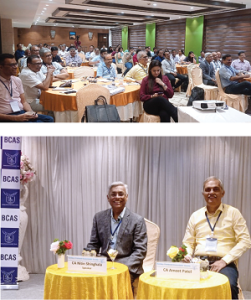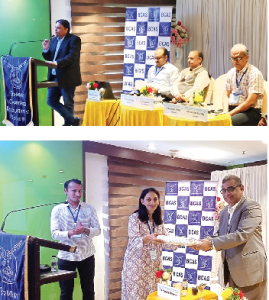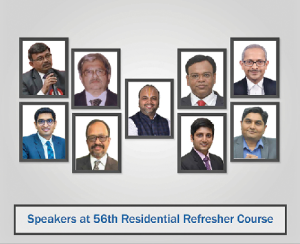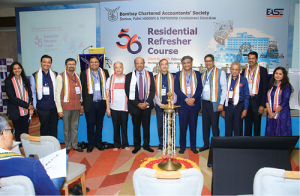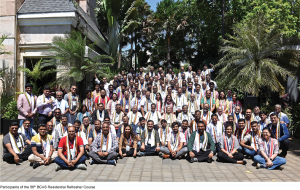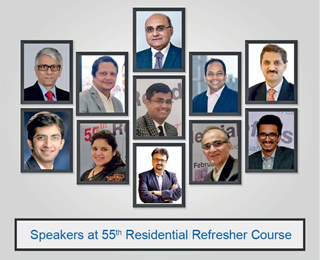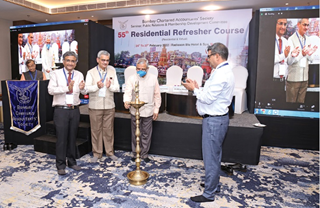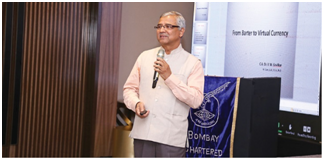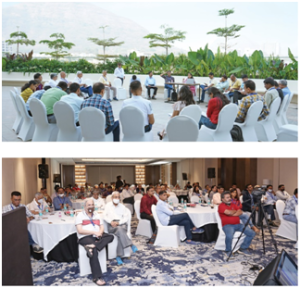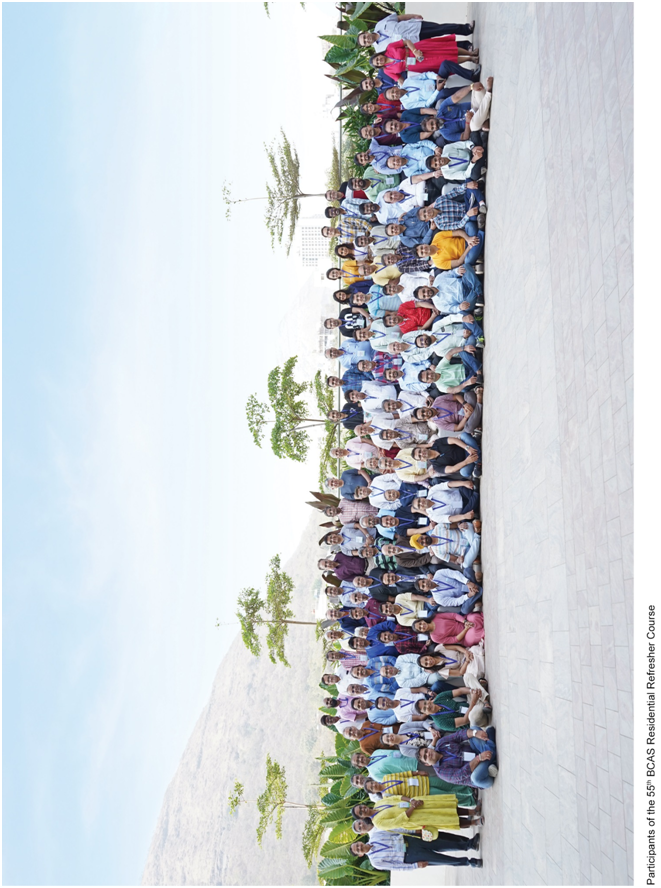ISSUE FOR CONSIDERATION
The scope and time limits for initiation of reassessment and the procedure of reassessment underwent a significant change with effect from 1st April, 2021, due to the amendments effected through the Finance Act, 2021. Through these amendments, sections 147, 148, 149 and 151 were replaced, and a new section 148A, laying down a new procedure to be followed before issue of notice under section 148, was inserted.
Till 31st March 2021, section 149 laid down the time limit for issue of notice for reassessment as under:
“149. (1) No notice under section 148 shall be issued for the relevant assessment year,—
(a) if four years have elapsed from the end of the relevant assessment year, unless the case falls under clause (b) or clause (c);
(b) if four years, but not more than six years, have elapsed from the end of the relevant assessment year unless the income chargeable to tax which has escaped assessment amounts to or is likely to amount to one lakh rupees or more for that year;
(c) if four years, but not more than sixteen years, have elapsed from the end of the relevant assessment year unless the income in relation to any asset (including financial interest in any entity) located outside India, chargeable to tax, has escaped assessment.
Explanation.—In determining income chargeable to tax which has escaped assessment for the purposes of this sub-section, the provisions of Explanation 2 of section 147 shall apply as they apply for the purposes of that section.”
The new section 149, effective 1st April, 2021, reads as under:
“149. (1) No notice under section 148 shall be issued for the relevant assessment year,—
(a) if three years have elapsed from the end of the relevant assessment year, unless the case falls under clause (b);
(b) if three years, but not more than ten years, have elapsed from the end of the relevant assessment year unless the Assessing Officer has in his possession books of account or other documents or evidence which reveal that the income chargeable to tax, represented in the form of asset, which has escaped assessment amounts to or is likely to amount to fifty lakh rupees or more for that year:
Provided that no notice under section 148 shall be issued at any time in a case for the relevant assessment year beginning on or before 1st day of April, 2021, if such notice could not have been issued at that time on account of being beyond the time limit specified under the provisions of clause (b) of sub-section (1) of this section, as they stood immediately before the commencement of the Finance Act, 2021:
Provided further that the provisions of this sub-section shall not apply in a case, where a notice under section 153A, or section 153C read with section 153A, is required to be issued in relation to a search initiated under section 132 or books of account, other documents or any assets requisitioned under section 132A, on or before the 31st day of March, 2021:
Provided also that for the purposes of computing the period of limitation as per this section, the time or extended time allowed to the assessee, as per show-cause notice issued under clause (b) of section 148A or the period during which the proceeding under section 148A is stayed by an order or injunction of any court, shall be excluded:
Provided also that where immediately after the exclusion of the period referred to in the immediately preceding proviso, the period of limitation available to the Assessing Officer for passing an order under clause (d) of section 148A is less than seven days, such remaining period shall be extended to seven days and the period of limitation under this sub-section shall be deemed to be extended accordingly.
Explanation: For the purposes of clause (b) of this sub-section, “asset” shall include immovable property, being land or building or both, shares and securities, loans and advances, deposits in bank account.”
The Taxation and Other Laws (Relaxation and Amendment of Certain Provisions) Act, 2020 (TOLA) was enacted to relax certain timelines and requirements, in the light of the COVID-19 pandemic and related lockdowns. Section 3(1) of that Act provided that where, any time-limit had been prescribed under a specified Act which falls during the period from 20th March, 2020 to 31st December, 2020, or such other date after 31st December, 2020, as the Central Government may notify, for the completion or compliance of such action as completion of any proceeding or passing of any order or issuance of any notice, intimation, notification, sanction or approval by any authority under the provisions of the specified Act; , and where completion or compliance of such action had not been made within such time, then the time-limit for completion or compliance of such action shall stand extended to 31st March, 2021, or such other date after 31st March, 2021, as the Central Government may notify. Pursuant to this, notifications were issued from time to time, whereby the time limits up to 31st March 2021 for issue of various notices (including notices under section 148) were extended till 30th June 2021.
Pursuant to such notifications under TOLA, a large number of notices for reassessment were issued from April to June 2021 under the old section 148 r.w.s 149. Many of these notices were challenged in writ petitions before the High Courts. Some High Courts had held that such notices issued after 31st March, 2021 under the old law were invalid, as they could only have been issued under the new law which became effective from April 2021 by following the procedure prescribed under section148A, within the timelines prescribed by section 149.
All cases were then consolidated and heard by the Supreme Court. The Supreme Court, in the case reported as Union of India vs. Ashish Agarwal 444 ITR 1, held that the notices issued under old section 148 to the respective assessees were invalid but should nonetheless be deemed to have been issued under newly inserted section 148A as substituted by the Finance Act, 2021 and treated to be show-cause notices in terms of section 148A (b). With this the Supreme court regularised the defaults of the AOs under the special powers of Article 142 of the Constitution of India. The AOs were directed to provide to the assessees the information and material relied upon by the revenue within 30 days, so that the assessees could reply to the notices within two weeks thereafter. The requirement of conducting any enquiry with the prior approval of the specified authority under section 148A(a) was dispensed with as a one-time measure vis-à-vis those notices which had been issued under the old provisions of section 148 prior to its substitution with effect from 1st April, 2021. The Supreme Court, at the same time directed that such regularised reassessment proceedings should in all cases be subjected to compliance of all the procedural requirements and the defences which might be available to the assessee under the substituted provisions of sections 147 to 151 and which may be available under the Finance Act, 2021 and in law.
Given the fact that these notices issued under old Section148 were deemed to be notices under section 148A(b), and orders under section 148A(d) were to be passed after completion of enquiry along with issue of notice under new Section 148, the issue has arisen about the applicable time limit in such cases – whether the time limits under the pre-amended section 149 apply or whether the time limits under the amended section 149 apply for issue of notice under new Section148. Accordingly, the question that has arisen for the courts is whether notices under the old Section 148 issued after 31st March. 2021, particularly for A.Ys. 2013-14 and 2014-15 and for A.Y. 2015-16 under the new section 148 pursuant to notices issued under the old section 148 are validly issued within the time prescribed in new section 149. While the Delhi High Court has taken the view that such notices were validly issued within the time extended by TOLA, the Allahabad and Gujarat High Courts have held that such notices were invalid as they were not issued within the permissible time limit prescribed under new law.
TOUCHSTONE HOLDINGS CASE
The issue first came up before the Delhi High Court in the case of Touchstone Holdings (P) Ltd vs. ITO 289 Taxman 462.
In this case, a notice under the pre-amended section 148 was issued on 29th June, 2021 for the A.Y. 2013-14 in respect of an item of purchase of shares of Rs 69.93 lakhs. Pursuant to the decision of the Supreme Court in the case of Ashish Agarwal (supra), proceedings continued under section 148A, and an order was finally passed under section 148A(d) on 20th July, 2022, with notice under the amended section 148 being issued on the same date. The assessee challenged this order and notice in a writ petition before the Delhi High Court.
Besides arguing that the assessee had no connection with the concerned transaction, on behalf of the assessee, it was argued that as per the first proviso to Section 149 of the Act (as amended by Finance Act, 2021), no notice for re-assessment could be issued for A.Y. 2013-14 as the time limit for initiating the proceedings expired on 30th March, 2020 as per the provisions of Section 149 (as it stood prior to its amendment by Finance Act, 2021). It was therefore contended that the proceedings pursuant to the notice dated 29th June, 2021 and the judgement of the Supreme Court in the case of Ashish Agarwal (supra), were time barred.
On behalf of the Revenue, it was submitted that Section 3 of TOLA applied to the pre-amended Section 149 and therefore the initial notice dated 29th June, 2021, and the proceedings taken in continuation as per the judgment of Ashish Agarwal (supra) were not time barred. Further submissions were made regarding the merits of the reassessment proceedings.
Examining the submissions on merits of the reassessment proceedings, the Delhi High Court held that these being disputed questions of fact, could not be adjudicated by it in writ proceedings. The Delhi High Court further held that the contention of the assessee that the present proceedings were time barred was not correct in the facts of the case, which pertained to A.Y. 2013-2014 and where reassessment proceedings were initiated during the time limit extended by TOLA. Examining the pre-amended provisions of Section 149, the Delhi High Court noted that the time limit for issuing notice under unamended Section 149, which was falling from 20th March, 2020 till 31st March 2021, was extended by Section 3 of TOLA read with Notification No. 20/2021 dated 31st March, 2021, and Notification No. 38/2021 dated 27th April, 2021, until 30th June, 2021.
The Delhi High Court noted that the initial notice in the proceedings before it was issued on 29th June, 2021 i.e. within extended time limit. The notice was quashed by the Delhi High Court following its judgment in Mon Mohan Kohli vs. ACIT 441 ITR 207, as the mandatory procedure of Section 148A was not followed before issuing the notice. In the judgment, the Delhi High Court had struck down Explanations A(a)(ii) and A(b) to the said notifications. However, the relevant portion of the notification, which extended the time limit for issuance of time barring reassessment notices until 30th June, 2021 was not struck down by the Court and in fact the Court categorically held at paragraph 98 that power of re-assessment that existed prior to 31st March 2021 stood extended till 30th June, 2021. The notice stood revived as a notice under section 148A(b) due to the decision of the Supreme Court in the case of Ashish Agarwal (supra).
In the view of the Delhi High Court, consequently, since the time period for issuance of reassessment notice for the A.Y. 2013-14 stood extended until 30th June, 2021, the first proviso of the amended Section 149 was not attracted in the facts of the case. Since the time limit for initiating assessment proceedings for A.Y. 2013-14 stood extended till 30th June, 2021, consequently, the reassessment notice dated 29th June, 2021, which had been issued within the extended period of limitation was not time barred.
The Delhi High Court also held that the challenge to paragraph 6.2.(i) of the CBDT Instruction No. 1/2022 dated 11th May, 2022 was not maintainable. The contention of the assessee that assessment for A.Y. 2013-14 became time barred on 31st March, 2020 was incorrect. The time period for assessment stood extended till 30th June, 2021.The initial reassessment notice for A.Y. 2013-14 had been issued to the petitioner within the said extended period of limitation. The Supreme Court had declared that the reassessment notice be deemed as a notice issued under section 148A of the Act and permitted Revenue to complete the said proceedings. The income alleged to have escaped assessment was more than Rs 50 lakhs and therefore, the rigour of Section 149 (1)(b) of the Act (as amended by the Finance Act, 2021) had been satisfied.
The Delhi High Court therefore dismissed the writ petition. This decision was subsequently followed by the Delhi High Court in the case of Kusum Gupta vs ITO 451 ITR 142.
RAJEEV BANSAL’S CASE
The issue came up again before the Allahabad High Court in the case of Rajeev Bansal vs. Union of India 147 taxmann.com 549.
A large number of writ petitions involving A.Ys. 2013-14 to 2017-18 were heard by the Allahabad High Court together. In all these cases, notice had been issued under the pre-amended section 148 between 1st April, 2021 to 30th June, 2021. Two legal issues were framed by the court, which would cover the issues involved in all the cases. These were:
(i) Whether the reassessment proceedings initiated with the notice under section 148 (deemed to be notice under section 148A), issued between 1st April, 2021 and 30th June, 2021, can be conducted by giving benefit of relaxation/extension under TOLA upto 30th March, 2021, and then the time limit prescribed in Section 149(1)(b) (as substituted w.e.f. 01st April, 2021) is to be counted by giving such relaxation benefit of TOLA from 30th March, 2020 onwards to the revenue.
(ii) Whether in respect of the proceedings where the first proviso to Section 149(1)(b) is attracted, benefit of TOLA will be available to the revenue, or in other words, the relaxation law under TOLA would govern the time frame prescribed under the first proviso to Section 149 as inserted by the Finance Act, 2021, in such cases?
For the A.Ys. 2013-14 and 2014-15, it was argued by the counsels for the assessees that the assessment for these years cannot be reopened, in as much as, maximum period of six years prescribed in pre-amendment provision of Section 149(1)(b) had expired on 31st March, 2021. No notice under section 148 could be issued in a case for the A.Y. 2013-14 and 2014-15 on or after 01st April, 2021, being time barred, on account of being beyond the time limit specified under the provisions of Section 149(1)(b) as they stood immediately before the commencement of the Finance Act 2021. For the A.Ys. 2015-16, 2016-17, 2017-18, it was contended that the monetary threshold and other requirements of the Income Tax Act in the post-amendment regime, i.e. after the commencement of the Finance Act, 2021 have to be followed. The validity of the jurisdictional notice under section 148 was thus to be tested on the touchstone of compliances or fulfilment of requirements by the revenue as per Section 149(1)(b) and the first proviso to Section 149(1) inserted by the amendment under the Finance Act 2021, w.e.f. 1st April, 2021.
The Allahabad High Court noted that it was undisputed that the notices issued under the pre-amendment section 148 were to be regarded as notices issued under section 148A(b). The High Court analysed the provisions of the pre-amended section 148, the provisions of TOLA and the notifications issued under TOLA. It also analysed the history of the litigation in this regard, commencing from its decision in the case of Ashok Kumar Agarwal vs. Union of India 131 taxmann.com 22 and ending with the Supreme Court decision in the case of Ashish Agarwal (supra). The Allahabad High Court thereafter took note of the CBDT instruction No. 1 of 2022, dated 11th May, 2022, for implementation of the judgement of the Supreme Court in Ashish Agarwal (supra).
The Allahabad High Court thereafter noted the arguments on behalf of the assessees as under:
(i) After the amendment brought by the Finance Act, 2021, new/amended provisions will apply to reassessment proceedings.
(ii) TOLA will not extend the time limit provided for initiation of reassessment proceedings under the amended Sections 147 to 151 from 1st April, 2021 onwards.
(iii) The result is that the revenue has to comply with all the requirements of the substituted/amended provisions of Sections 147 to 151A in the reassessment proceedings, initiated on or after 1st April, 2021. All compliances under the amended provisions will have to be made by the revenue.
(iv) Simultaneously, all defences under the substituted/amended provisions will be available to the assessee.
(v) About the impact of TOLA on the amendment by the Finance Act, 2021, no time extension under section 3(1) of TOLA can be granted in the time limit provided under the substituted provisions. Section 3(1) of TOLA saved only the reassessment proceeding as they existed under the unamended law.
(vi) The scheme of assessment underwent a substantial change with the enforcement of the Finance Act, 2021. The general provisions of TOLA cannot vary the requirements of the Finance Act, 2021, which is a special provision, as the special overrides general.
(vii) Reassessment notice under section 148 can be issued only upon the jurisdiction being validly assumed by the assessing authority, for which the compliances of substituted provisions of Sections 149 to 151A have to be made by the revenue.
(viii) New/amended provisions are beneficial in nature for the assessee and provide certain pre-requisite conditions/monetary threshold, etc. to be adhered to by the revenue to issue jurisdictional notice under section 148. The revenue has to meet a higher threshold to discharge a positive burden because of the substantive changes made in the new regime.
(ix) The pre-requisite conditions to issue notice under section 148 in the pre and post amendment regime demonstrate that for the reassessment notice after elapse of the period of 3 years but before 10 years from the end of the relevant assessment year, notice under section 148 cannot be issued unless the AO has in his possession books of accounts or other documents or evidence which reveal that the income chargeable to tax, represented in the form of assets, which has escaped assessment, amount to or is likely to amount to Rs.50 lakhs or more for that year.
(x) The monetary threshold for opening of assessment after elapse of three years for the period upto ten years has, thus, been put in place.
(xi) Further, first proviso to sub-section (1) of Section 149 has been placed to assert that the cases wherein notices could not have been issued within the period of six years as per clause (b) of sub-section (1) of Section 149 under the pre-amendment provision, reassessment notices cannot be issued on or after 1st April, 2021 after the commencement of the Finance Act, 2021, as such cases have become time barred.
(xii) Such cases cannot be reopened by giving an extension in the time limit by applying the provisions of TOLA.
(xiii) The Finance Act, 2021 had limited the applicability of TOLA and after amendment, the compliances/conditions under the amended provisions have to be fulfilled.
(xiv) The Apex Court in Ashish Agarwal (supra) has categorically provided that all defences available to the assessee including those under section 149 and all rights and contentions available to the concerned assessee and revenue under the Finance Act, 2021 and in law, shall continue to be available. The effect of the said observation is that the Revenue though may be able to maintain the notices issued under the unamended Section 148, as preliminary notices under section 148-A as inserted by the Finance Act, 2020, but for issuance of jurisdictional notice under section 148, the requirements of the amended Section 149 under the Finance Act, 2021 have to be fulfilled.
(xv) TOLA was enacted by the Parliament to deal with the contingency and the extension of time limit under section 3(1) of TOLA and was contemplated not to remain in perpetuity. TOLA had only substituted the limitation that was expiring. The extension under TOLA for the A.Y. 2015-16, 2016-17, 2017-18 was not permissible as the time limit for reopening of assessment proceedings for the said assessment years even under the unamended Section 149 was not expiring at the time of enforcement of the Enabling Act (TOLA 2020).
(xvi) The findings returned by the Division Bench and the Apex Court as noted above were reiterated that the relaxation granted by the Apex Court to consider Section 148 notices under the unamended Act as preliminary notices issued under Section 148A as inserted by the Finance Act, 2021, was a one time measure treating them as a bona fide mistake of the Revenue. However, it is evident from the said finding that the provisions of the Finance Act, 2021 have to be given their full effect.
(xvii) TOLA cannot infuse life into the pre-existing law to provide an extension of time to the Revenue in the time limit therein, to reopen cases for the assessment years which have become time barred under the first proviso to Section 149.
(xviii) As regards Instruction No 1 of 2022, executive instructions cannot limit or extend the scope of the Act or cannot alter the provisions of the Act. Instructions or Circular cannot impose burden on a tax payer higher than what the Act itself as a true interpretation envisages.
(xix) The direction issued in (clause 6.1, in third bullet point) that the decision of the Apex Court read with the time extension provided by TOLA, will allow extended reassessment notices to travel back in time to their original date when such notices were to be issued and then new Section 149 is to be applied at that point, is based on the wrong interpretation of the judgement of the Apex Court and the High Court. In clause 6.2 (i) of the Circular, it is provided that reassessment notices for A.Ys. 2013-14 and 2014-15 can be issued with the approval of the specified authority, if the case falls under clauses (b) of sub section (1) of Section 149 amended by the Finance Act, 2021. By issuing such instructions contained in clauses 6.1 and 6.2 of the Circular dated 11th May, 2022, the CBDT has devised a novel method to revive the reassessment proceedings which otherwise became time barred under the amended Section 149, specifically for the A.Ys. 2013-14 and 2014-15 being beyond the time limit specified under the provisions of unamended clause (b) of sub section (1) of section 149.
(xx) Reference was made to the Bombay High Court decision in Tata Communications Transformation Services Ltd vs ACIT 443 ITR 49 for the proposition that section 3(1) of TOLA does not provide that any notice issued under section 148 after 31st March, 2021 will relate back to the original date when it ought to have been issued or that the clock is stopped on 31st March, 2021 such that the provisions as existing on the said date will be applicable to notices issued thereafter, relying on the provisions of TOLA. It was observed therein that the purpose of Section 3(1) of TOLA is not to postpone or extend the applicability of the unamended provisions of the IT Act. Observations were made by the Bombay High Court therein that TOLA is not applicable for A.Y. 2015-16 or any subsequent year as the time limit to issue notice under section 148 for these assessment years was not expiring within the period for which Section 3(1) of TOLA was applicable and hence TOLA could not apply for these assessment years. As a consequence, there can be no question of extending the period of limitation for such assessment years, where the revenue could have issued notice of reassessment by complying with the requirements of the unamended provisions. In a case where the revenue did not initiate proceedings within the time limit under the unamended IT Act extended by TOLA, further extensions for inaction of the revenue cannot be granted by the notifications issued under TOLA on 31st March, 2021 or thereafter, once the amendments have been brought into place on 1st April, 2021, to extend the time limit under the unamended provisions.
On behalf of the Revenue, it was pointed out that TOLA was enacted to provide relaxation of the time limit provided in the Specified Acts, including the IT Act. Issuance of notice under section 148 as per the prescribed time limit in Section 149 was permissible until 30th June, 2021. It was argued that the notices issued on or after 1st April, 2021 under section 148, for reassessment were issued in accordance with the substituted laws and not as per the pre-existing laws and TOLA was only applied for extension in the timeline. TOLA has overriding effect over the IT Act, and will extend the time limit for issue of notice/action under the IT Act. The extension of time granted by TOLA would save all notices issued on or after 1st April, 2021.
It was claimed on behalf of the Revenue that only the time limit for various action/compliances/issuance of notices had been changed in the Finance Act, 2021. In any case, timelines remained under both the enactments, pre and post amendment. The reassessment notices would have been barred by time had there been no extension of the time limit under the IT Act by TOLA. The applicability of Explanation to Clause A(a) of the notification dated 31st March, 2021 and Explanation to clause A(b) of the notification dated 27.4.2021, may have been restricted to reassessment proceedings as in existence on 31.3.2021 and have been read down as applicable to the pre-existing Section 147 to 151-A, but the substantive provisions of extension of time for action/compliances/issuance of notice of the notifications dated 31st March, 2021 and 27th April, 2021, still survive.
It was argued that in Ashok Kumar Agarwal’s case, the explanations which provided that for the notices issued after 1st April, 2021, the time line under the pre-existing provisions would apply, had been held to be offending provisions, but the Allahabad High Court had left it open to the respective assessing authorities to initiate reassessment proceedings in accordance with the amended provisions by the Finance Act, 2021. The extension in time until 30th June, 2021 as granted by the notifications dated 31st March, 2021 and 27th April, 2021 would, thus, apply to the timeline provided under the amended provisions brought by the Finance Act, 2021.
It was submitted that when two Parliamentary Acts were on the statute book, one providing substantive provisions and procedure for initiating reassessment proceeding and the other granting extension of time for action/compliances/issuance of notices under the substantive and procedural provisions of the IT Act, a harmonious construction of both the provisions had to be made. Thus, whatever time limit was provided under the IT Act as on 1st April, 2021, the same had to be extended until 30th June, 2021 to enable the revenue to initiate and process the reassessment proceedings under section 148 as amended by the Finance Act, 2021.
It was argued that in view of the decision of the Apex Court in saving all notices issued by the revenue pan-India by treating them as notices under section 148-A of the amended provisions, all actions of the revenue subsequent to the issuance of notices under section 148-A in compliance of the directions of the Apex Court would have to be saved. The reference to the date of issuance of Section 148 notices, which were quashed by different High Courts, thus, has to be the date of notices under section 148-A of the amended provisions and extension of time, for compliances prescribed under the amended provisions, has to be granted to the revenue, accordingly. As observed by the Apex Court, when all defences remain available to the assessee, all rights of the revenue will have to be preserved/made available.
It was urged that even the Division Bench in Ashok Kumar Agarwal’s case (supra) had recognised that TOLA plainly was an enactment to extend timelines. Consequently, from 1st April, 2021 onwards, all references to issuance of notices contained in TOLA must be read as references to the substituted provisions only. The Allahabad High Court had observed that there was no difficulty in applying the pre-existing provisions to pending proceedings and then proceeded to harmonize the two laws. It was argued that giving this plain and simple meaning to TOLA, the extensions in time limit which were available to the revenue until 31st March, 2021 under TOLA, became available to the revenue after 1st April, 2021 by the Notification No.20 of 2021 dated 31st April, 2021 and the Notification No.38 dated 2th April, 2021, which had not been quashed or held invalid by the High Court or the Apex Court. Thus, extension of three months until 30th June, 2021 in the time limit provided under the IT Act, whether pre or post amendment, had to be granted. The time limit provided in the amended Section 149 of three years and 10 years had to be extended until 30th June, 2021, by virtue of the notifications issued under section 3(1) of TOLA. It was argued that the CBDT Instruction only clarifies the above position of the two provisions – that the time extension provided by TOLA will allow “extended reassessment notices” to travel back in time to their original date when such notices were to be issued, and then the new Section 149 is to be applied at that point of time.
It was submitted that based on the said logic, the “extended reassessment notices” for the A.Ys. 2013-14, 2014-15 and 2015-16 were to be dealt with by issuance of fresh notice under amended Section 148, with the approval of the specified authority, in the cases which fall under clause (b) of Section 149(1) as amended by the Finance Act, 2021. It is further clarified in the CBDT instruction that the specified authority under section 151 of the amended provisions shall be the authority prescribed under clause (ii) of that section. Similarly, for A.Y. 2016-17 and A.Y. 2017-18, fresh notice under Section 148 can be issued with the approval of the specified authority under clause (a) of amended Section 149(1), as they are within the period of three years from the end of the relevant assessment years, because of the extension of time by TOLA.
On behalf of the Revenue, reliance was placed on the decision of the Delhi High Court in the case of Touchstone Holdings (supra), which had relied on the earlier decision of the Delhi High Court in the case of Mon Mohan Kohli vs. ACIT (supra), and had held that with the declaration by the Apex Court that the reassessment notice issued on or after 1st April, 2021 shall be deemed to be the notice under section 148-A, the Revenue was permitted to complete the reassessment proceedings in accordance with the amended provisions of Section 149.
A specific query was raised by the Bench to the revenue to answer the effect of the first proviso to Section 149(1) of the amended provisions inserted by the Finance Act, 2021 which prohibits issuance of notice under section 148, in a case where it has become time barred under the unamended (pre-existing) clause (b) of Section 149(1). The answer on behalf of the revenue was that time limit of 6 years provided in clause (b) of Section 149(1) stood extended by virtue of TOLA until 31st March, 2021, and further extensions in the time limit (of six years) are to be granted under the notifications issued under section 3(1) of TOLA until 30th June, 2021. The result would be that the cases for the A.Ys. 2013-14 and 2014-15, where the period of six years had expired on 31st March, 2020 and 31st March, 2021 respectively, would not be hit by the first proviso to Section 149(1) brought by the Finance Act, 2021. The cases for these assessment years had to be evaluated and the reassessment proceedings had to be conducted for them in accordance with clause (b) of Section 149(1) as amended by the Finance Act, 2021, being beyond the period of three years but within the limitation of ten years. Similarly, for the A.Y. 2015-16, on the expiry of three years on 31st March, 2019, the extension until 30th June, 2021 is to be granted to bring the reassessment proceedings under amended clause (b) of Section 149(1). For the A.Ys. 2016-17 and 2017-18, where the period of three years had expired on 31st March, 2020 and 31st March, 2021 respectively, the extension in the time limit of three years was to be granted under TOLA and these cases would fall under the amended clause (a) of Section 149(1), being within the prescribed limit of three years until 30th June, 2021.
The Allahabad High Court noted the summary of its observations in the case of Ashok Kumar Agarwal (supra) as under:
(i) By its very nature, once a new provision has been put in place of the pre-existing provision, the earlier provision cannot survive, except for the things done or already undertaken to be done or things expressly saved to be done.
(ii) In absence of any saving clause to save pre-existing provisions, the revenue authorities could only initiate proceeding on or after 1st April, 2021, in accordance with the substituted laws and not the pre-existing laws. TOLA, that was pre-existing, confronted the IT Act as amended by the Finance Act, 2021, as it came into existence on 1st April, 2021. In both the provisions, i.e. TOLA and the Finance Act, 2021, there is absence, both of any express provision in its effort to delegate the function, to save the applicability of provisions of pre-existing Sections 147 to 151, as they existed up to 31st March, 2021.
(iii) Plainly, TOLA is an enactment to extend timelines only from 1st April, 2021 onwards. Consequently, from 1st April, 2021 onwards all references to issuance of notice contained in TOLA must be read as reference to the substituted provisions only.
(iv) There is no difficulty in applying pre-existing provisions to pending proceedings and, this is how, the laws were harmonized.
(v) For all reassessment notices which had been issued after 1st April, 2021, after the enforcement of amendment by the Finance Act, 2021, no jurisdiction has been assumed by the assessing authority against the assesses under the unamended law. No time extension could, thus, be made under section 3(1) of TOLA read with the notifications issued thereunder.
(vi) Section 3 of TOLA only speaks of saving or protecting certain proceedings from being hit by the rule of limitation. That provision also does not speak of saving any proceeding from any law that may be enacted by the Parliament, in future. The non-obstante clause of Section 3(1) of TOLA does not govern the entire scope of the said provision. It is confined to and may be employed only with reference to the second part of Section 3(1) of TOLA, i.e. to protect the proceedings already underway. The Act, thus, only protected certain proceedings that may have become time barred on 30th March, 2021 up to the date 30th June, 2021. Correspondingly, by delegated limitation incorporated by notifications, the Government may extend that time limit. That timeline alone stood extended up to 30th June, 2021.
(vii) Section 3(1) of TOLA does not itself speak of the reassessment proceeding or Section 147 or Section 148 as it existed prior to 1st April, 2021. It only provides a general relaxation of limitation granted on account of the general hardship existing upon the spread of pandemic COVID-19. After the enforcement of the Finance Act, 2021, it applies to the substituted provisions and not the pre-existing provisions.
The reference to reassessment proceedings with respect to pre-existing and new substituted provisions of Sections 147 and 148 has been introduced only by the later notifications issued under TOLA. It was concluded that in absence of any proceedings of reassessment having been initiated prior to the date 1st April, 2021, it is the amended law alone that would apply. The notifications issued by the Central Government or the CBDT Instructions could not have been issued plainly to over reach the principal legislation. Unless harmonised as such, those notifications would remain invalid.
(viii) On the submission of the revenue that practical difficulties faced by the revenue in initiation of reassessment proceedings due to onset of pandemic COVID-19 dictates that the reassessment proceedings be protected, it was noted that practicality, if any, may lead to litigation. Once the matter reaches the Court, it is the legislation and its language and the interpretation offered to that language as may primarily be decisive to govern the outcome of the proceedings. To read practicality into enacted law is dangerous.
(ix) It would be oversimplistic to ignore the provisions of, either TOLA or the Finance Act, 2021 and to read and interpret the provisions of Finance Act, 2021 as inoperative in view of the facts and circumstances arising from the spread of the pandemic Covid-19.
(x) In absence of any specific clause in the Finance Act, 2021 either to save the provisions of TOLA or the notifications issued thereunder, by no interpretative process can those notifications be given an extended run of life, beyond 31st March, 2021.
(xi) The notifications issued under TOLA may also not infuse any life into a provision that stood obliterated from the statute book w.e.f. 31st March, 2021, in as much as, the Finance Act, 2021 does not enable the Central Government to issue any notification to reactivate the pre-existing law, which has been substituted by the principal legislature. Any such exercise made by the delegate/Central government would be dehors any statutory basis.
(xii) In absence of any express saving of the pre-existing laws, the presumption drawn in favor of that saving, is plainly impermissible.
(xiii) No presumption exists by the notifications issued under TOLA that the operation of the pre-existing provisions of the Act had been extended and thereby provisions of Section 148A (introduced by the Finance Act, 2021) and other provisions had been deferred.
On these grounds, in Ashok Kumar Agarwal’s case, the Allahabad High Court had quashed the reassessment notices, leaving it open to the respective assessing authorities to initiate reassessment proceedings in accordance with the provisions of the IT Act as amended by the Finance Act, 2021 after making all compliances, as required by law.
The Allahabad High Court then summarized the Supreme Court findings in Ashish Agarwal’s case (supra) as under:
(I) By substitution of Sections 147 to 151 by the Finance Act, 2021, radical and reformative changes are made governing the procedure for reassessment proceedings. Under pre-Finance Act, 2021, the reopening was permissible for a maximum period up to 6 years and in some cases beyond even 6 years leading to uncertainty for considerable time. Therefore, the Parliament thought it fit to amend the Income Tax Act to simplify the Tax Administration, ease compliances and reduce litigation. To achieve the said object, by the Finance Act, 2021, Sections 147 to 149 and Section 151 have been substituted.
(II) Section 148(A) is a new provision, which is in the nature of a condition precedent. Introduction of Section 148A can, thus, be said to be a game changer with an aim to achieve ultimate object of simplifying the tax administration. By way of Section 148A, the procedure has now been streamlined and simplified. All safeguards are, thus, provided before issuing notice under section 148. At every stage, the prior approval of the specified authority is required, even for conducting the inquiry as per Section 148(A)(a).
(III) Substituted Section 149 is the provision governing the time limit for issuance of notice under section 148. The substituted Section 149 has reduced the permissible time limit for issuance of such a notice to three years and, only in exceptional cases, in ten years. It also provides further additional safeguards which were absent under the earlier regime pre-Finance Act, 2021.
(IV) The new provisions substituted by the Finance Act, 2021, being remedial and benevolent in nature and substituted with a specific aim and object to protect the rights and interest of the assesses as well as and the same being in public interest, the respective High Courts have rightly held that the benefit of new provisions shall be made applicable even in respect of the proceedings related to past assessment years, provided Section 148 notice has been issued after 1st April, 2021.
The Supreme Court had therefore confirmed the view taken by the High Courts, including by the Allahabad High Court in the case of Ashok Kumar Agarwal (supra). However, the Supreme Court had further observed that:
I) The judgments of several High Courts would result in no assessment proceedings at all, even if the same are permissible under the Finance Act, 2021 as per substituted Sections 147 to 151. To remedy the situation where revenue became remediless, in order to achieve the object and purpose of reassessment proceedings, it was observed that the notices under section 148 after the amendment was enforced w.e.f 1st April, 2021, were issued under the unamended Section 148, due to bonafide mistake in view of the subsequent extension of time by various notifications under TOLA.
II) The notices ought not to have been issued under the unamended Act and ought to have been issued under the substituted provisions of Sections 147 to 151 as per the Finance Act, 2021.
III) There appears to be a genuine non application of the amendments as the officers of the revenue may have been under a bona fide belief that the amendments may not yet have been enforced.
The Supreme Court therefore held that:
“Instead of quashing and setting aside the reassessment notices issued under the unamended provisions of IT Act, the High Courts ought to have passed order construing the notices issued under the unamended Act/unamended provision of the IT Act as those deemed to have been issued under Section 148(A) of the Income Tax Act, as per the new provision of Section 148(A). In that case, the revenue ought to have been permitted to proceed with the reassessment proceedings as per the substituted provisions of Sections 147 to 151 of the Income Tax Act as per the Finance Act, 2021, subject to compliance of all the procedural requirements and the defences which may be available to the assessee under the substituted provisions of Section 147 to 151 of the Income Tax Act, and which may be available under the Finance Act, 2021 and in law.”
The Allahabad High Court observed that while passing the order, it was noted by the Apex Court that there was a broad consensus on the proposed modification on behalf of the revenue and the counsels appearing on behalf of respective assessees.
The Allahabad High Court noted that in Ashok Kumar Agarwal’s case, it had held that if the Finance Act, 2021 had not made the substitution of the reassessment procedure, revenue authorities would have been within their rights to claim extension of time, under TOLA. The sweeping amendments made by the Parliament by necessary implication or implied force limited applicability of TOLA. The power to grant time extension thereunder was limited to only such reassessment proceedings as had been initiated till 31st March, 2021. It was also held that in absence of any specific clause in the Finance Act, 2021 either to save the provisions of TOLA or the Notifications issued thereunder, by no interpretative process, the notifications could be said to infuse life into a provision that stood obliterated from the Statute book w.e.f 31st March, 2021. It was held that the Finance Act, 2021 did not enable the Central Government to issue any notification to reactivate the pre-existing law, the exercises made by the delegate/Central Government would be dehors any statutory basis. It was, thus, categorically held by the Division Bench that the notifications did not insulate or save the pre-existing provisions pertaining to reassessment under the Act and that the operation of the pre-existing provisions of the Act could not be extended.
The Allahabad High Court noted that the contention of the revenue, if accepted, would create conflict of laws. The limitation under the pre-existing provisions would have to be kept alive till 30th June, 2021 with the aid of the extensions granted by the notifications issued by the Central Government, which had been read down by the Co-ordinate Division Bench in Asok Kumar Agarwal’s case. As per the Division Bench judgment, the time limit provided in unamended Section 149, could not be extended beyond 31st March, 2021, so as to render the amended provisions of Section 149 ineffective. The stand of the revenue that TOLA simply extended the period of limitation until 30th June, 2021, due to the disturbances from the spread of pandemic COVID-19, had been categorically turned down by the Division Bench in Ashok Kumar Agarwal’s case (supra) with the above observations.
The Allahabad High Court observed that there was a substantial change in the threshold/requirements which had to be met by the revenue before issuance of reassessment notice after elapse of three years under clause (b) of Section 149(1). Not only monetary threshold had been substituted but the requirement of evidence to arrive at the opinion that the income escaped assessment has also been changed substantially. A heavy burden was cast upon the revenue to meet the requirements of clause (b) of Section 149(1) for initiation of reassessment proceedings after lapse of three years.
Analysing the first proviso to Section 149(1), the Allahabad High Court observed that the time limit in clause (b) of unamended Section 149(1) of six years, thus, cannot be extended up to ten years under clause (b) of amended Section 149(1), to initiate reassessment proceeding in view of the first proviso to Section 149(1). In other words, the case for the relevant assessment year where six years period has elapsed as per unamended clause (b) of Section 149(1) cannot be reopened after commencement of the Finance Act, 2021 w.e.f. 1st April, 2021.
The view in Ashok Kumar Agarwal’s case (supra) that after 1st April, 2021, if the rule of limitation permitted, the revenue could initiate reassessment proceedings in accordance with the new law, after making adequate compliances, had been upheld by the Apex Court in Ashish Agarwal’s case (supra). According to the Allahabad High Court, in case the arguments of the revenue were accepted, the benefits provided to the assessee in the substantive provisions of clause (b) of Section 149(1) and the first proviso to Section 149 had to be ignored or deferred. The defences which may be available to the assessee under section 149 and/or which may be available under Finance Act, 2021 had to be denied.
At the first blush, the argument of the revenue seemed convincing by simplistic application of TOLA, treating it as a statute for extension in the limitation provided under the IT Act, but on a deeper scrutiny, if the argument of the revenue were accepted, it would render the first proviso to Section 149(1) ineffective until 30th June, 2021 and otiose. This view, if accepted, would result in granting extension of time limit under the unamended clause (b) of Section 149, in cases where reassessment proceedings had not been initiated during the lifetime of the unamended provisions, i.e. on or before 31st March, 2021. It would infuse life in the obliterated unamended provisions of clause (b) of Section 149(1), which was dead and removed from the Statute book w.e.f. 1st April, 2021, by extending the timeline for actions therein.
According to the Allahabad High Court, in absence of any express saving clause, in a case where reassessment proceedings had not been initiated prior to the legislative substitution by the Finance Act, 2021, the extended time limit of unamended provisions by virtue of TOLA cannot apply. In other words, the obligations upon the revenue under clause (b) of amended Section 149(1) cannot be relaxed. The defences available to the assessee in view of the first proviso to Section 149(1) could not be taken away. The notifications issued by the delegates/Central Government in exercise of powers under Section 3(1) of TOLA could not infuse life in the unamended provisions of Section 149 by this way.
The Allahabad High Court addressed the argument of the revenue that this interpretation would render TOLA otiose, though it had not been declared invalid by any court, by stating that this argument was misconceived, as the extensions in the time limit under the unamended Sections of the IT Act prior to the amendment by the Finance Act, 2021, would still be applicable to the reassessment proceedings as may have been in existence on 31st March, 2021.
Referring to the CBDT Instruction No 1 of 2022, the Allahabad High Court found that that the third bullet to clause (6.1) which stated that the Apex Court had allowed time extension provided by TOLA and the “extended reassessment notices” will travel back in time to their original date when such notices were to be issued and then Section 149 is to be applied at that point, was a surreptitious attempt to circumvent the decision of the Apex Court. The Supreme Court observations had been given in piecemeal in that bullet to give it a distorted picture. As per the Allahabad High Court, terming reassessment notices issued on or after 1st April, 2021 and ending with 30th June, 2021 as “extended reassessment notices”, within the time extended by TOLA and various notifications issued thereunder, in Para 6.1 was an effort of the revenue to overreach the judgment of that Court in Ashok Kumar Agarwal (supra) as affirmed by the Apex court in Ashish Agarwal (supra).
In any case, the Allahabad High Court observed that this instruction, as per the Revenue itself, was only a guiding instruction – the instructions in the third bullet to clause 6.1 and clauses 6.2(i) and (ii), being contrary to the decision of the Supreme Court, had no binding force.
Referring to the Delhi High Court decision in Touchstone Holdings (supra), the Allahabad High Court observed that the view taken therein was in direct conflict with the view taken by the Allahabad High Court in Ashok Kumar Agarwal (supra) affirmed by the Apex Court in Ashish Agarwal (supra). In fact, the observation in Mon Mohan Kohli (supra) by the Delhi High Court in paragraph ‘98’ that the power of reassessment that existed prior to 31st March, 2021 continued to exist till the extended period, i.e. till 3th June, 2021, and the Finance Act, 2021 had merely changed the procedure to be followed prior to issuance of notice w.e.f. 1st April, 2021, had been misread and misapplied in Touchstone (supra) by the Division Bench of the Delhi High Court. Even in Mon Mohan Kohli’s case (supra), the Delhi High Court had quashed the reassessment notices issued on or after 1st April, 2021 on the grounds that TOLA did not give power to the Central Government to extend the erstwhile Sections 147 to 151 beyond 31st March, 2021 and/or defer the operation of substituted provisions enacted by the Finance Act, 2021. In fact, in Mon Mohan Kohli’s case (supra), the Delhi High Court had concurred with the Allahabad High Court view in Ashok Kumar Agarwal’s case (supra).
The Allahabad High Court observed that it was a settled law that a taxing statute must be interpreted in the light of what was clearly expressed. It was not permissible to import provisions in a taxing statute so as to supply any assumed deficiency. In interpreting a taxing statute, equitable considerations are out of place. Nor can taxing statutes be interpreted on any presumptions or assumptions. The court must look squarely at the words of the statute and interpret them. Taxing statute would need to be interpreted in the light of what is clearly expressed. It cannot imply anything which is not expressed. Before taxing any person it must be shown that he falls within the ambit of the charging section by clear words used in the section, and if the words are ambiguous and open to two interpretations, the benefit of interpretation is given to the subject. There is nothing unjust in the taxpayer escaping if the letter of the law fails to catch him on account of the legislature’s failure to express itself clearly.
The Allahabad High Court therefore held that:
(i) The reassessment proceedings initiated with the notice under section 148 (deemed to be notice under section 148-A), issued between 1st April, 2021 and 30th June, 2021, could not be conducted by giving benefit of relaxation/extension under TOLA up to 30th March, 2021, and the time limit prescribed in Section 149(1)(b) (as substituted w.e.f. 01st April, 2021) cannot be counted by giving such relaxation from 30th March, 2020 onwards to the Revenue.
(ii) In respect of the proceedings where the first proviso to Section 149(1)(b) is attracted, benefit of TOLA will not be available to the revenue, or in other words, the relaxation law under TOLA would not govern the time frame prescribed under the first proviso to Section 149 as inserted by the Finance Act, 2021, in such cases.
A similar view was taken by the Gujarat High Court in the case of Keenara Industries (P) Ltd vs. ITO 147 taxmann.com 585, where the Gujarat High Court held that the reassessment notices for A.Ys. 2013-14 and 2014-15, which had become time-barred prior to 1st April, 2021 under the old regime on expiry of 6 years limitation period, could not be revived by TOLA/extension of time notification issued under TOLA. Therefore, reassessment notices for A.Ys. 2013-14 and 2014-15 could not be issued on or after 1st April, 2021 under the new regime effective from 1st April, 2021 even within the extended time-limit of 1st April, 2021 to 30th June, 2021 applicable under the TOLA Notifications.
OBSERVATIONS
In Ashish Agarwal’s case, the Supreme Court had held:
“ 8.However, at the same time, the judgments of the several High Courts would result in no reassessment proceedings at all, even if the same are permissible under the Finance Act, 2021 and as per substituted sections 147 to 151 of the IT Act. The Revenue cannot be made remediless and the object and purpose of reassessment proceedings cannot be frustrated. It is true that due to a bonafide mistake and in view of subsequent extension of time vide various notifications, the Revenue issued the impugned notices under section 148 after the amendment was enforced w.e.f. 01.04.2021, under the unamended section 148. In our view the same ought not to have been issued under the unamended Act and ought to have been issued under the substituted provisions of sections 147 to 151 of the IT Act as per the Finance Act, 2021. There appears to be genuine non-application of the amendments as the officers of the Revenue may have been under a bonafide belief that the amendments may not yet have been enforced. Therefore, we are of the opinion that some leeway must be shown in that regard which the High Courts could have done so. Therefore, instead of quashing and setting aside the reassessment notices issued under the unamended provision of IT Act, the High Courts ought to have passed an order construing the notices issued under unamended Act/unamended provision of the IT Act as those deemed to have been issued under section 148A of the IT Act as per the new provision section 148A and the Revenue ought to have been permitted to proceed further with the reassessment proceedings as per the substituted provisions of sections 147 to 151 of the IT Act as per the Finance Act, 2021, subject to compliance of all the procedural requirements and the defences, which may be available to the assessee under the substituted provisions of sections 147 to 151 of the IT Act and which may be available under the Finance Act, 2021 and in law. Therefore, we propose to modify the judgments and orders passed by the respective High Courts as under:
(i) The respective impugned section 148 notices issued to the respective assessees shall be deemed to have been issued under section 148A of the IT Act as substituted by the Finance Act, 2021 and treated to be show-cause notices in terms of section 148A(b). The respective assessing officers shall within thirty days from today provide to the assessees the information and material relied upon by the Revenue so that the assessees can reply to the notices within two weeks thereafter;
(ii) The requirement of conducting any enquiry with the prior approval of the specified authority under section 148A(a) be dispensed with as a one-time measure vis-à-vis those notices which have been issued under Section 148 of the unamended Act from 01.04.2021 till date, including those which have been quashed by the High Courts;
(iii) The assessing officers shall thereafter pass an order in terms of section 148A(d) after following the due procedure as required under section 148A(b) in respect of each of the concerned assessees;
(iv) All the defences which may be available to the assessee under section 149 and/or which may be available under the Finance Act, 2021 and in law and whatever rights are available to the Assessing Officer under the Finance Act, 2021 are kept open and/or shall continue to be available and;
(iv) The present order shall substitute/modify respective judgments and orders passed by the respective High Courts quashing the similar notices issued under unamended section 148 of the IT Act irrespective of whether they have been assailed before this Court or not.”
The Supreme Court therefore held that the new law would apply, even where notices issued under old law were deemed to be valid and the AO was permitted to proceed thereunder, and while so holding, did not exclude the operation of the first proviso to new Section 149(1). On the contrary, it held that all other provisions of the new law would apply and that the defences otherwise available thereunder would be available to the assessee. Further, the Supreme Court was seized with the view taken by the different High Courts, and had agreed with their views particularly that the notices issued under the old law of s. 148, on or after, 31st March, 2021, were invalid. It only modified those decisions to the extent stated above that the notices were deemed to be issued within the time. Therefore, the Allahabad High Court rightly held that the assessee was entitled to the defence that the notices were barred by limitation due to the applicability of the first proviso to the amended section 149(1), and that its order in the case of Ashok Kumar Agarwal (supra) was modified only to the extent of the above.
As observed by the Gujarat High Court, no notification could extend the limitation of a repealed law. The Apex Court in case of Ashish Agarwal (supra) had not disturbed the findings of various High Courts to the effect that the notifications in question were ultra vires the law. The Gujarat High Court also rightly pointed out that in Touchstone Holdings’ case, the Delhi High Court proceeded on the basis that earlier notice was legal, valid and within the time frame. The Delhi High Court had gone on a premise that by virtue of observation in case of Mon Mohan Kohli (supra), the extension to time limit would survive.
Therefore, the view taken by the Allahabad and Gujarat High Courts seems to be the better view of the matter, and that in cases where the notice is barred by limitation on account of the first proviso to new section 149(1), the reassessment notices would be invalid.












